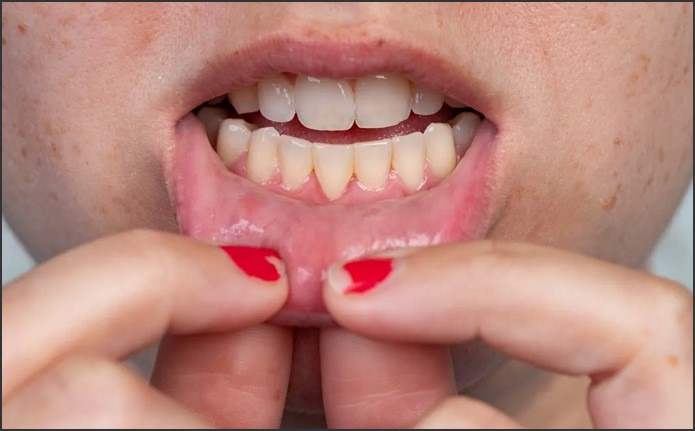Minor Receding Gums: Addressing Mild Gum Recession and Preventing Progression

Gum recession is a common dental condition that affects many people. It is characterized by the gradual loss of gum tissue around the teeth, resulting in exposed tooth roots and an increased risk of tooth decay and gum disease. Minor receding gums, also known as mild gum recession, is a milder form of gum recession that can be addressed with proper oral hygiene and preventive measures. This article will discuss the causes of minor receding gums, the symptoms associated with it, and the treatments available to address it and prevent further progression.
How to Identify and Treat Mild Gum Recession: A Guide for Patients
Gum recession is a common dental condition that affects many people. It occurs when the gum tissue around the teeth begins to pull away, exposing more of the tooth and root. While mild gum recession is usually painless, it can lead to more serious dental problems if left untreated. Fortunately, there are steps you can take to identify and treat mild gum recession.
Identifying Mild Gum Recession
The first step in treating mild gum recession is to identify it. Common signs of gum recession include:
• Tooth sensitivity: If your teeth become more sensitive to hot and cold temperatures, it could be a sign of gum recession.
• Visible gum line: If you can see more of your tooth than usual, it could be a sign of gum recession.
• Loose teeth: If your teeth feel loose or wiggly, it could be a sign of gum recession.
• Receding gums: If your gums appear to be pulling away from your teeth, it could be a sign of gum recession.
Treating Mild Gum Recession
Once you have identified mild gum recession, the next step is to treat it. Treatment options for mild gum recession include:
• Good oral hygiene: Brushing and flossing regularly can help prevent further gum recession.
• Medicated mouthwash: Using a medicated mouthwash can help reduce inflammation and promote healing.
• Soft-bristled toothbrush: Using a soft-bristled toothbrush can help reduce irritation and inflammation.
• Dental bonding: Dental bonding can help cover exposed roots and protect them from further damage.
• Gum grafting: Gum grafting can help restore lost gum tissue and protect exposed roots.
Conclusion
Mild gum recession is a common dental condition that can lead to more serious problems if left untreated. Fortunately, there are steps you can take to identify and treat mild gum recession. By following good oral hygiene practices, using a medicated mouthwash, and visiting your dentist for treatment options such as dental bonding or gum grafting, you can help protect your teeth and gums from further damage.
Understanding the Causes of Minor Receding Gums and How to Prevent Progression
Receding gums, also known as gingival recession, is a common dental condition that affects many people. It occurs when the gum tissue surrounding the teeth begins to pull away, exposing more of the tooth and root. This can lead to sensitivity, pain, and even tooth loss if left untreated. While there are many causes of receding gums, the most common are periodontal disease, aggressive brushing, and misaligned teeth.
Periodontal disease, also known as gum disease, is an infection of the gums caused by bacteria. It is the leading cause of receding gums and can be caused by poor oral hygiene, smoking, and certain medications. Symptoms of periodontal disease include red, swollen, and tender gums, bleeding gums, and bad breath. If left untreated, periodontal disease can cause the gums to recede and the teeth to become loose.
Aggressive brushing is another common cause of receding gums. Brushing too hard or using a hard-bristled toothbrush can cause the gums to recede. This is because the bristles of the toothbrush can irritate the gums, causing them to pull away from the teeth.
Misaligned teeth can also cause receding gums. When the teeth are not properly aligned, it can cause the gums to be stretched and pulled away from the teeth. This can lead to gum recession and sensitivity.
Fortunately, there are ways to prevent receding gums from progressing. The first step is to practice good oral hygiene. This includes brushing twice a day with a soft-bristled toothbrush and flossing daily. It is also important to visit your dentist regularly for checkups and cleanings.
If you have periodontal disease, it is important to seek treatment from your dentist. Treatment may include antibiotics, deep cleaning, and surgery.
If you have misaligned teeth, your dentist may recommend braces or other orthodontic treatments to correct the alignment.
Finally, it is important to avoid aggressive brushing and to use a soft-bristled toothbrush. This will help to protect the gums from irritation and prevent further recession.
By following these steps, you can help to prevent receding gums from progressing and protect your teeth and gums from further damage.
Conclusion
Minor receding gums can be addressed and prevented from progressing with proper oral hygiene, regular dental visits, and lifestyle changes. Brushing and flossing twice a day, using a soft-bristled toothbrush, and avoiding hard foods and tobacco products can help to reduce the risk of gum recession. Additionally, visiting a dentist regularly for professional cleanings and check-ups can help to identify and address any early signs of gum recession. With the right care and attention, minor receding gums can be managed and prevented from progressing.